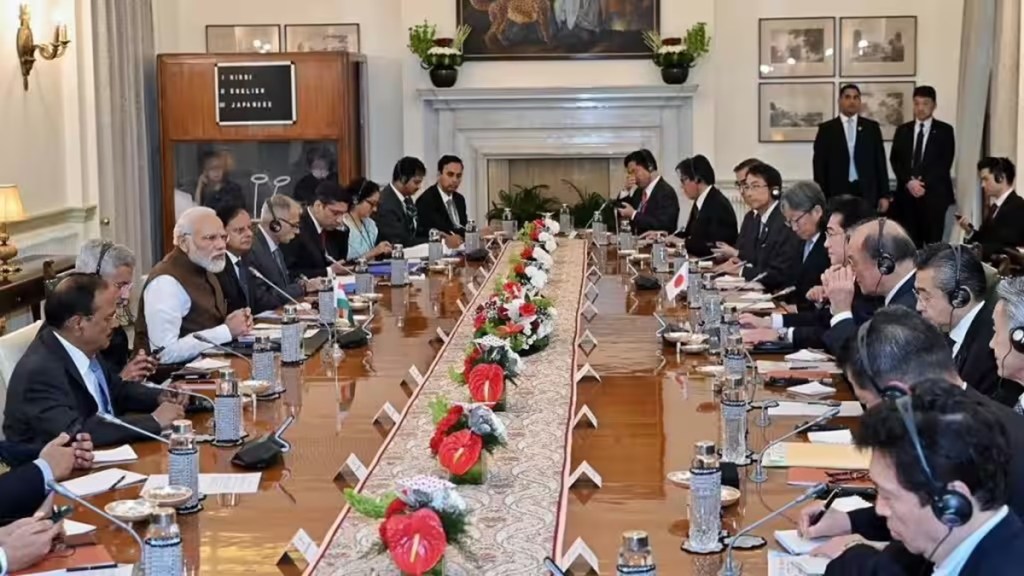Anita Inder Singh
Japanese foreign minister Yoshimasa Hayashi’s visit to India in late July highlighted the advantages of stronger collaboration between the countries. Japan became Asia’s first economic tiger in 1960s and, ranking 19th in the Human Development Index, remains one of the world’s most highly developed and richest countries. In comparison, China ranks 78th, and India ranks 132nd. Japan’s regional and international credentials for economic, educational, and social development are strong.
Japan is a member of the G7 as well as the G20. It has been an American ally since the early post-1945 Cold War. Since Russia invaded Ukraine in February 2022, Japan has enhanced its global image as an upholder of international law by condemning Russia’s aggression. Last winter, it decided to militarise. It feared that its old foe, China, one of Russia’s close strategic partners, could follow Moscow’s predatory example, endanger the territorial sovereignty of most of its Asian neighbours, and invade Taiwan. Tokyo decided to increase defence spending by $310 billion, or more than 27%, over the next five years. This would make Japan the world’s third-largest military power.
Unsurprisingly, an expansionist and authoritarian China sees democratic Japan as a threat to Asian and global peace—not least because of its economic and technological strength. In June, China alleged that the US, Japan, and South Korea were using the excuse of concerns over the nuclear tests carried out by North Korea in February 2023 to strengthen communication in security, including sharing intelligence. Part of the reason for China’s anger may lie in Japan’s economic and technological advancement. Japan aims to strengthen its security by promoting its defence technology. It is the only Asian country that can throw down the tech gauntlet before China.
Japan’s GDP is nearly $ 5 trillion. That is smaller than China’s $18 trillion and larger than India’s $3.7 trillion. But its GDP per capita is larger than that of both at nearly $34, 000. It spends 3.59% of GDP on research and development—China spends 2.55% and India 0.8%. Japan also leads the Asian Development Bank and advocates trade liberalisation and investment, supports the multilateral trading system, and works against protectionism. The Bank has given generous loans to South Asian countries including India, Sri Lanka, Bangladesh, Nepal, and the Maldives. Over the next five years, it will invest $42 billion in India in the northeast and in clean energy projects. Additionally, Tokyo plans to invest $75 billion across the Indo-Pacific to counter China.
Unnoticed by many, Japan established the Japan International Cooperation Agency (JICA) in October 2003, which could be regarded as a precursor to China’s Belt-and-Road Initiative, inaugurated a decade later. JICA has offered development funds to advance foreign policy goals. Its recent projects have ranged from the development of supply chains with ASEAN’s fast-growing economies to universal health coverage in Ghana. Japan’s strong trading credentials and political balancing skills are obvious from its membership of the Regional Comprehensive Economic Partnership, which includes China, and the Comprehensive and Progressive Agreement for Trans-Pacific Partnership, a free trade area which excludes China. Meanwhile, it will strengthen the Japan-US alliance in all areas, including diplomacy, defence, and economy. Tokyo also plans to expand cooperation and increase connectivity between Indo-Pacific countries. The intent is to promote freedom of navigation and maritime defence. Japan will conduct joint maritime exercises with India and the US as well as drills with ASEAN countries and the Pacific Islands.
However, Tokyo and New Delhi have different stances on the war in Ukraine. To stop Russia’s invasion of Ukraine as soon as possible, Tokyo holds that it is vital for the international community, including the so-called global South, to show solidarity. Japan has joined the West in imposing sanctions on Russia. India has not. New Delhi has also refused to blame Moscow for the Ukraine war and increased its buying of Russian oil.
Nevertheless, the scope for enlarging Indo-Japanese cooperation is considerable. In recent years, the economic relationship between Japan and India has deepened. The volume of trade between the two countries has increased. In 2021, India was the 18th-largest trading partner for Japan, and Japan was the 13th-largest trading partner for India. Additionally, direct investment from Japan to India has increased, and Japan was the 5th largest investor for India in 2021.
India has been the biggest recipient of Japanese development aid for decades. The Delhi Metro highlights the success of cooperation with Japan through Tokyo’s overseas development aid. Japan continues to cooperate in supporting strategic connectivity linking south Asia to southeast Asia through its “Act East” policy and building partnerships for high-class infrastructure. Moreover, Japan and India are constructing the Japanese style high-speed railway in Gujarat. It is hoped that the project will be completed by 2027. But contrary to New Delhi’s claim that India is the best place for foreign investors, Japan wants India to offer a transparent and predictable business environment. Indeed, India could learn much from the practices that have made Japan one of the world’s democratic and economic successes, and India can only benefit from closer ties with Asia’s rising economic and military star.
(The author is Founding professor, Centre for Peace and Conflict Resolution, New Delhi)

